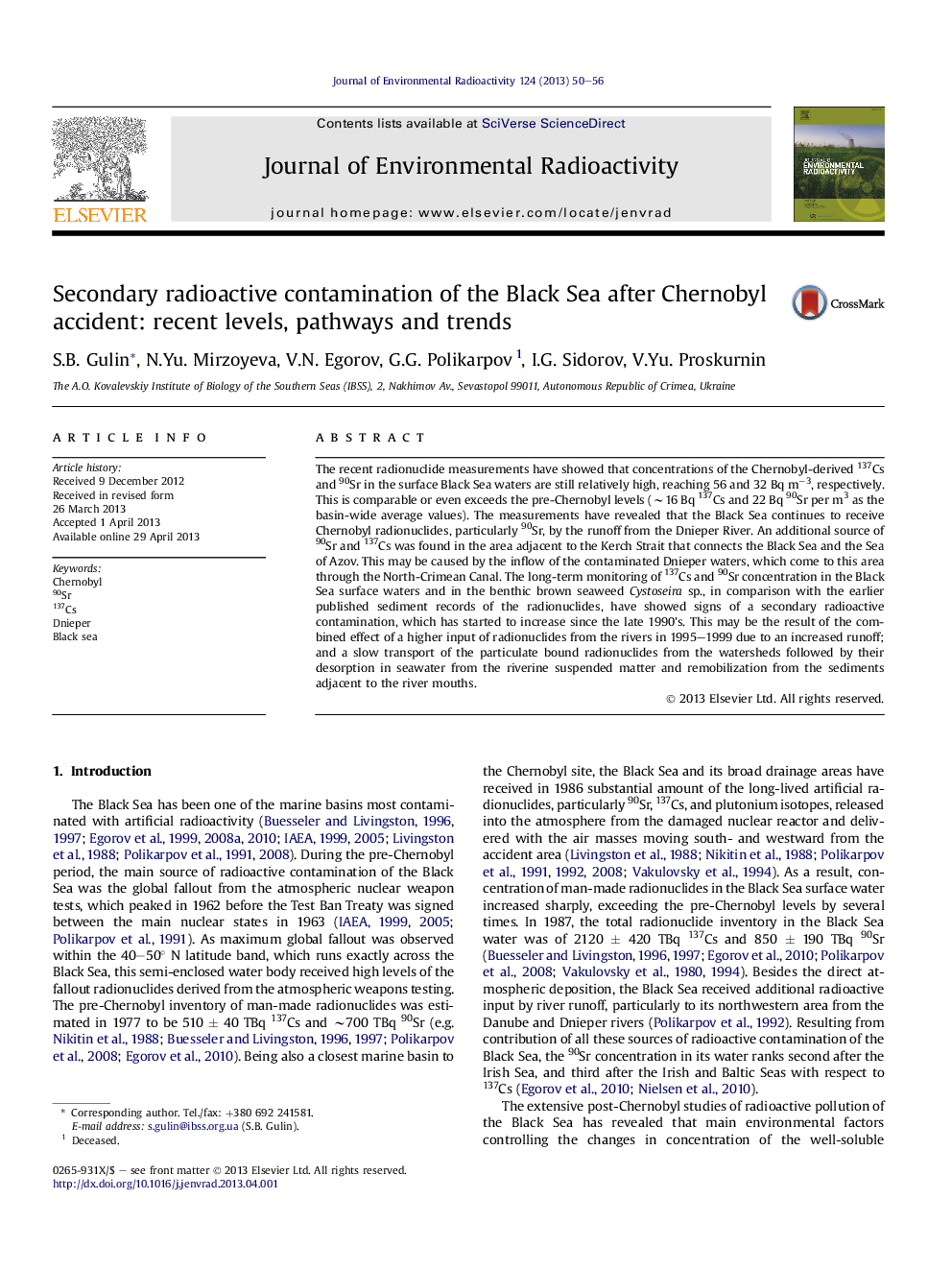| کد مقاله | کد نشریه | سال انتشار | مقاله انگلیسی | نسخه تمام متن |
|---|---|---|---|---|
| 1738174 | 1521609 | 2013 | 7 صفحه PDF | دانلود رایگان |

• Concentration of 137Cs and 90Sr in the Black Sea water is still relatively high.
• The Black Sea continues to receive considerable radionuclide amount from the rivers.
• The North-Crimean Canal is significant source of the Black Sea radioactivity.
• Secondary radioactive contamination of the Black Sea increased in the late 1990's.
• Radionuclide remobilization from sediments leads to a further Black Sea pollution.
The recent radionuclide measurements have showed that concentrations of the Chernobyl-derived 137Cs and 90Sr in the surface Black Sea waters are still relatively high, reaching 56 and 32 Bq m−3, respectively. This is comparable or even exceeds the pre-Chernobyl levels (∼16 Bq 137Cs and 22 Bq 90Sr per m3 as the basin-wide average values). The measurements have revealed that the Black Sea continues to receive Chernobyl radionuclides, particularly 90Sr, by the runoff from the Dnieper River. An additional source of 90Sr and 137Cs was found in the area adjacent to the Kerch Strait that connects the Black Sea and the Sea of Azov. This may be caused by the inflow of the contaminated Dnieper waters, which come to this area through the North-Crimean Canal. The long-term monitoring of 137Cs and 90Sr concentration in the Black Sea surface waters and in the benthic brown seaweed Cystoseira sp., in comparison with the earlier published sediment records of the radionuclides, have showed signs of a secondary radioactive contamination, which has started to increase since the late 1990's. This may be the result of the combined effect of a higher input of radionuclides from the rivers in 1995–1999 due to an increased runoff; and a slow transport of the particulate bound radionuclides from the watersheds followed by their desorption in seawater from the riverine suspended matter and remobilization from the sediments adjacent to the river mouths.
Journal: Journal of Environmental Radioactivity - Volume 124, October 2013, Pages 50–56